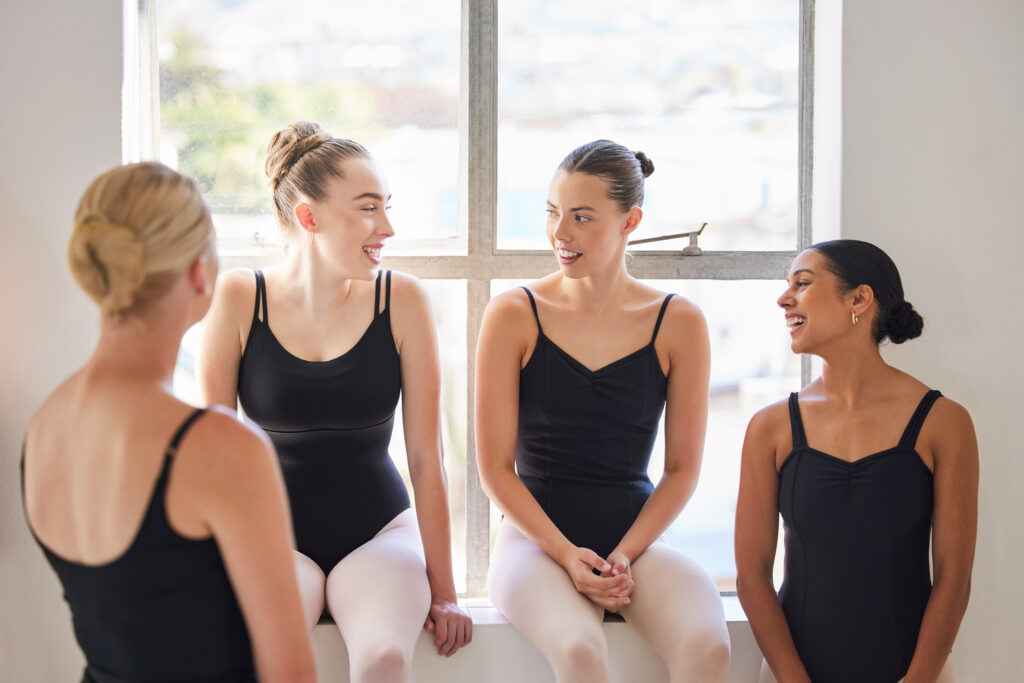Your Summer Intensive Just Ended. Here’s How to Readjust and Get Ready for Fall.
You’ve just had the best summer ever at your ballet intensive. You got to explore a new city, form new friendships, and make technical breakthroughs without any pesky homework assignments distracting from your 24/7 dance immersion. For five weeks, it felt like what the rest of your life could be.
And then…it ended.
Richmond Ballet apprentice Paul Piner remembers crashing back to reality after returning from the Bolshoi Ballet summer intensive in Connecticut to his small studio in Florida. From the moment his parents picked him up, Piner set his sights squarely on expanding his horizons again the following summer. But he worried about keeping up with what he had learned in the meantime, and he struggled to connect with classmates back at home. “I tried to express to anyone—my family, peers, teachers, a tree outside if it would listen—that there’s more than just the small studio out there. More opportunities and different ways of doing things.”
Returning home may feel like a bit of a letdown after taking class from world-renowned dancers, learning repertoire by famous choreographers, and being surrounded by like-minded classmates all summer. You may also be worried about hanging on to all you’ve learned before your studio’s fall session begins. Whether you’re feeling daunted or uninspired about September, below are some tips on how to make the most of the back-to-school season.

Plan Ahead
Dr. Elizabeth Hutter, principal at New Ballet School in San Jose, California, and president of the American Psychological Association in Performance Psychology, recommends using the interim weeks after your summer intensive to plan ahead. Take care of your body (including getting plenty of sleep and hydration); after some initial rest, try to maintain some basic condition so as not to undo the summer’s progress. Then slowly add in aerobic stamina, strength, and gentle flexibility training to prepare for the fall semester. She also recommends restocking and organizing your dance bag, writing down goals for the year, and planning your daily dance and school schedule. (Read more here for Hutter’s detailed advice.)
Melissa Stafford, chief artistic officer for The Rock School for Dance Education’s Ballet Division, says preparing to balance academic and ballet obligations is especially important for younger dancers and those not enrolled in pre-professional programs. (While the Rock’s Professional Division weaves academics into its day program, the school’s after-school division does not.) Time management can be especially challenging at the start of a new school year after a summer hyperfocused on dance. If Stafford discovers that a student has arrived late for ballet because they stayed up the night before to study, for example, she’ll speak to the dancer about incorporating a study break in between dance classes. With open communication between parents and school teachers at the semester’s beginning, she says, “we can usually come up with some sort of strategy to fit it all in.”
Imprint What You’ve Learned
To retain the progress you made at your intensive, Stafford suggests recording your corrections throughout the summer or even after returning home, while they’re still fresh in your mind. “The things that we say to students during the school year, other summer intensive teachers are seeing as well, but maybe they explain it in a way that suddenly makes sense.” A camera phone is a great tool to record those epiphanies in practice, but you can also recall them through journaling after the summer session.
Piner also recommends writing, and not just about perfecting a step’s technical brass tacks. He suggests digging a little deeper into how you felt in those pivotal moments. Rather than just recording the position you took for a more successful pirouette, dissect and visualize its entry and exit points: how you shifted your weight to get to that position, how it felt on the right foot, the left foot, what the sensation was mid-turn, etc.
Some of what you learned might be related to a different style than what you’re used to at home. For instance, if your summer program was Balanchine-based but your home studio trains in the Cecchetti method, Stafford says, it’s not a good idea to push against your local teachers. “It’s not that any of it is bad or good, it’s just the setting,” says Stafford. While it may be hard to make adjustments at first, versatility and learning to adapt are important parts of your training.As a professional, Stafford says, “you could be doing a Balanchine program and then two weeks later doing Paquita and a contemporary work in sneakers.”

Keep Up Your Network
For career-oriented dancers, networking doesn’t have to end with your intensive. “If there were particular programs or instructors who made a significant impact on you, you might consider following up with a word of thanks,” says Hutter. Emails or handwritten letters sent to a company or school’s general office usually find their way to the recipient if you don’t have their direct address, she says.
If you just can’t stand to wait until the next audition season or summer intensive to explore more of what the ballet world has to offer, bounce ideas off of your parents and teachers. When Stafford was the chair of the Peabody Preparatory Institute’s dance program in Baltimore, she worked with students to plan for Saturdays they could take off to participate in The Kennedy Center’s master class series in nearby Washington, DC. Look for workshops, master classes, and winter break intensives in your area to keep that inspiration going.
Implemented all of the above but still struggling to readjust? You might rediscover that positive mindset by helping others going through the same thing. “Be that supportive and friendly person in your class,” says Hutter. “Even just a genuine welcome or an encouraging smile to another dancer can set a tone that gives energy rather than drags it down.”







